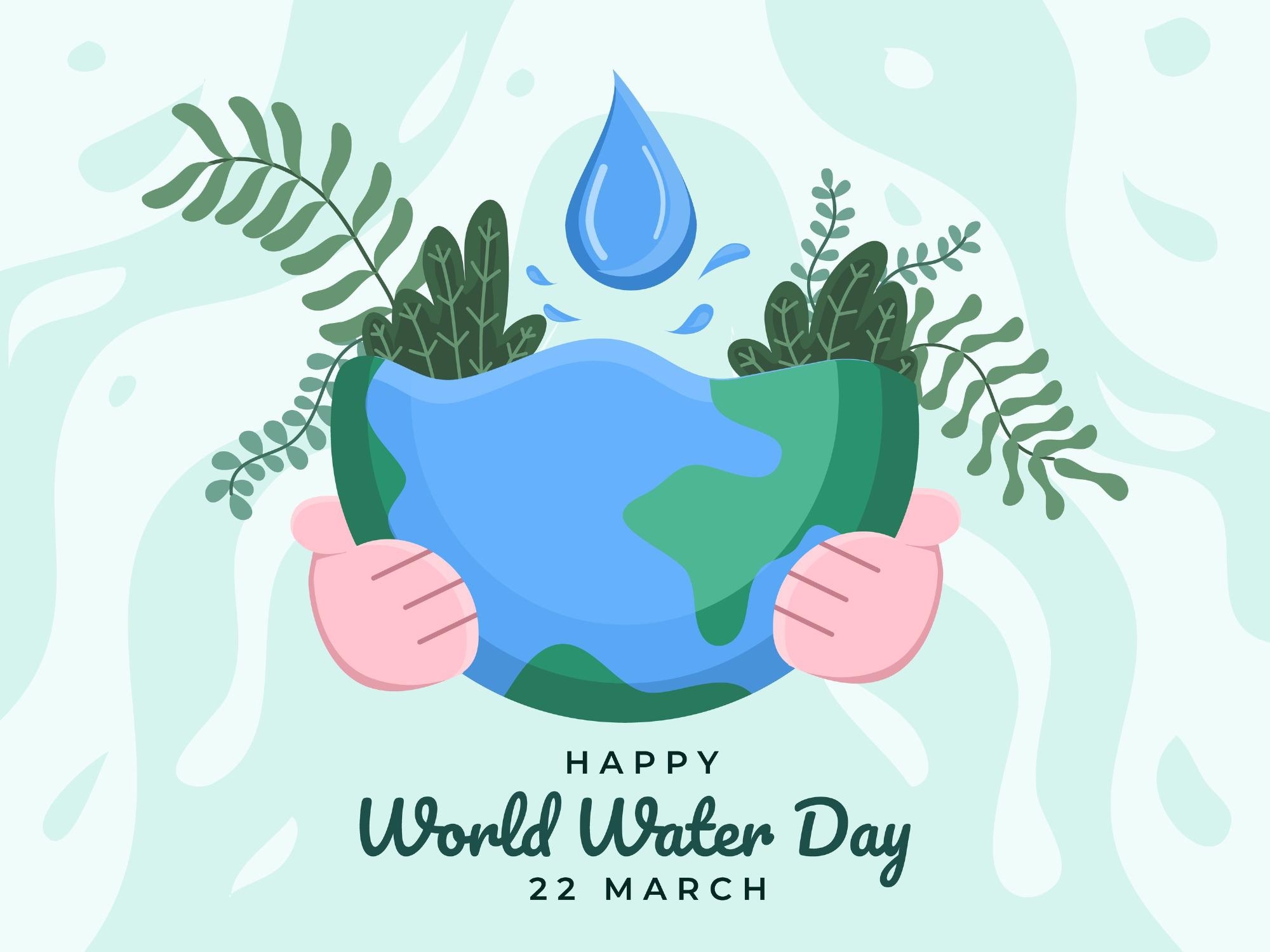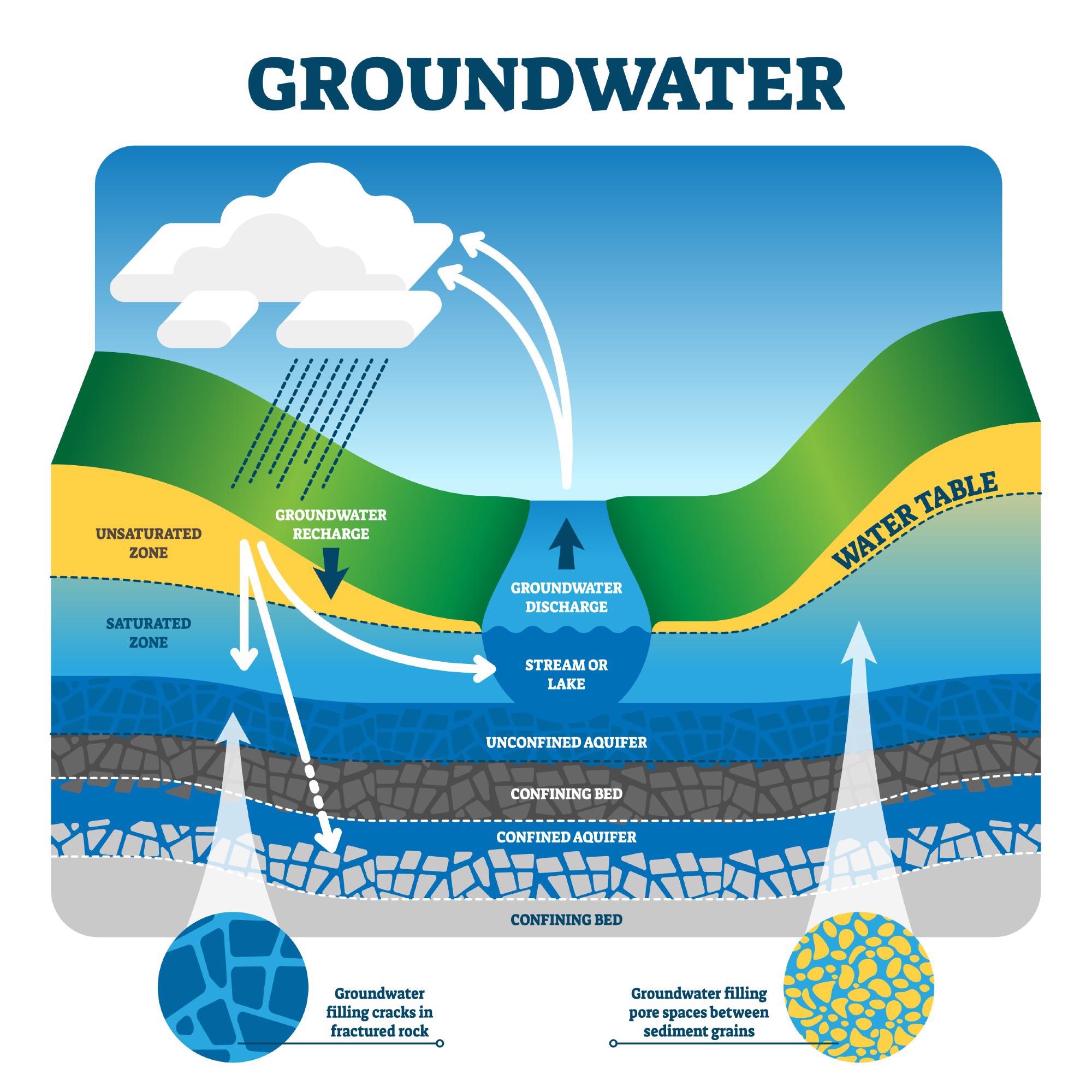Water is the basis of life. Population growth, urbanization and the expansion of industrial and agricultural production have increased the demand for this valuable natural resource. People need access to drinking water, which is becoming increasingly difficult due to climate change. Groundwater supplies are depleting, and globally, water scarcity is a major problem affecting one in three people on our planet.

Image Credit: Delook Creative/Shutterstock.com
Effect of Climate Change on Water Resources
Water resources, climate and socio-economic systems are interconnected so that a change in one of these systems will affect the others. Moreover, anthropogenic climate changes add to the challenges of sustainable freshwater use. The relationship between climate change and water resources is particularly important.
One of the main concerns linked to climate change is the quality and quantity of drinking water. As the water heats up, the proliferation of algae complicates and makes treatment more expensive, which means that many regions do not have the essential water quality over time. At higher temperatures, evaporation increases, reducing the total volume of available water.
Climate change is predicted to cause significant changes in groundwater recharge and flow regimes. Major rainfall events and increased recharge may offset increased evapotranspiration from the land surface, resulting in groundwater flooding in some circumstances. Less frequent heavy rains could cause soil drying, compaction, erosion, and gullying, increasing surface run-off and lowering groundwater infiltration.
Changes in vegetation and crop yields due to climate change will alter evapotranspiration rates and consequently water demand. In highland catchments, snowmelt and precipitation balance shifts affect groundwater recharge in downstream alluvial regions.
Climate change will also have a marked effect on glaciers and snow cover. Meteorological satellites show that in the entire Northern Hemisphere of the Earth over the past 40 years, the area occupied by snow has noticeably decreased. The most noticeable decrease in snow cover in the mountains is noted in the Swiss Alps and the west of North America.
As mean temperatures rise, the snowpack volume at higher elevations decreases. As a result, snowmelt occurs earlier (in season) than in the past year, resulting in early water release and increased losses. Because snowmelt provides one-third of the world's water supply, any change in the timing of flows will significantly impact water management. The situation will be particularly acute in Europe, which relies on snowpack for 80 percent of its freshwater.
Tools and Techniques to Tackle Water Shortage
The Middle East and North Africa (MENA) area is often regarded as the driest region on Earth. Droughts here have increased in frequency and intensity due to climate change. The MENA drought project, led by the International Water Management Institute, intends to improve drought mapping and early warning systems in multiple MENA countries, connecting them directly to drought response plans.
In general, the initiative contributes to improved water governance by enabling individuals and government entities to make educated decisions on responding quickly to droughts and strengthening their climate mitigation measures to prepare for future crises.
A team of researchers from the Massachusetts Institute of Technology and the University of California, led by Omar Yaghi, has developed a device for extracting water from dry air using solar energy. The system is built around a novel class of porous materials known as Metal-Organic Frameworks.
Embedded between a solar panel and a steam condenser, this material can collect 2.8 liters of water using one kilogram of MOF in 12 hours, where air humidity decreases to 20-30%.
Despite living near oceans, a huge portion of the world's population lacks access to safe drinking water. Scientists at the University of Manchester have developed a graphene oxide sieve capable of retaining salts while allowing only water to pass through.
In 2019, the University of Manchester's National Graphene Institute began collaborating with LifeSaver, a manufacturer of portable water filtration systems, to create new water purification devices based on this technology.
The World Meteorological Organization's World Cryosphere Watch is one of the major initiatives that support glacier and snow observations and monitoring. Scientific knowledge of processes occurring in the cryosphere, including glacier mass balances, snow and glacier melt, effects on water resources, and, more importantly, changes in hydrological flow, can help stakeholders prepare for the future.
World Water Day
Every year on March 22, the world commemorates World Water Day. It was first proposed in Rio de Janeiro during the 1992 United Nations Conference on Environment and Development (UNCED).
Ecologists of all countries celebrating Water Day draw public attention to the state of water bodies, the problems of water supply safe for human health, and rational water consumption.
Mass actions, campaigns to protect water bodies, excursions, conferences, seminars, forums, and exhibitions are held on this day.
Following are the main objectives of World Water Day:
- To encourage the implementation of appropriate measures to address the population's lack of access to safe drinking water
- Educate the people on the significance of safeguarding and maintaining freshwater supplies
- Involve governments, non-governmental groups, international organizations, and the private sector in World Water Day
Groundwater: The Theme of World Water Day 2022
The theme of World Water Day 2022 is groundwater. It draws attention to an underutilized water resource that has always been crucial but has received little recognition in planning for sustainable development.

Image Credit: VectorMine/Shutterstock.com
Groundwater protects rivers and lakes from shallowing, supports the nutrition of springs, and provides moisture to the roots of plants. In addition, people use fresh underground water for drinking, cooking, domestic and industrial needs.
Around the world, there is a characteristic trend towards greater exploitation of groundwater. In the last quarter of a century alone, approximately 300 million water wells have been drilled. In the United States, around one million water wells appear every year, used in agriculture for domestic and technical needs. As discussed earlier, climate change also significantly affects groundwater recharge and flow regimes.
Importance of World Water Day and Future Developments
March 22 serves as a reminder to humanity of the crucial importance of water resources to the environment and societal growth.
Practical initiatives can aid in public comprehension of the issues and potential solutions in this field. Converting words into commitments and deeds within a common subject is vital to achieving positive results.
As part of World Water Day 2022, the climate crisis presents us with an urgent priority in which each of us can play an important role.
References and Further Reading
Foster, Stephen & Tyson, Gillian & Dillon, Peter & Stigter, Tibor & Taylor, Richard & Scanlon, Bridget & Andreo, Bartolome & Kebede, Seifu & Escolero, Oscar & Taniguchi, Makoto & Wende, Franziska. (2019). Climate-Change Adaptation & Groundwater. [Online] International Association of Hydrogeologists. Available at: https://iah.org/wp-content/uploads/2019/07/IAH_Climate-ChangeAdaptationGdwtr.pdf
Kundzewicz, Z. W., Krysanova, V., Benestad, R. E., Hov, Ø., Piniewski, M., & Otto, I. M. (2018). Uncertainty in climate change impacts on water resources. Environmental Science & Policy, 79, 1-8. https://doi.org/10.1016/j.envsci.2017.10.008
Orago, N. W. (2022). Africa and MENA Regions (2020), Yearbook of International Disaster Law Online, 3(1), 442-452. https://doi.org/10.1163/26662531_00301_020
Kim, H., Yang, S., Rao, S. R., Narayanan, S., Kapustin, E. A., Furukawa, H., ... & Wang, E. N. (2017). Water harvesting from air with metal-organic frameworks powered by natural sunlight. Science, 356(6336), 430-434. https://doi.org/10.1126/science.aam8743
Abraham, J., Vasu, K., Williams, C. et al. Tunable sieving of ions using graphene oxide membranes. Nature Nanotech, 12, 546–550 (2017). https://doi.org/10.1038/nnano.2017.21
Key, J., Goodison, B., Schöner, W., Godøy, Ø., Ondráš, M., & Snorrason, Á. (2015). A Global Cryosphere Watch. Arctic, 68, 48–58. http://www.jstor.org/stable/43871386
United Nations. World Water Day March 22. [Online] Available at: https://www.un.org/en/observances/water-day
Disclaimer: The views expressed here are those of the author expressed in their private capacity and do not necessarily represent the views of AZoM.com Limited T/A AZoNetwork the owner and operator of this website. This disclaimer forms part of the Terms and conditions of use of this website.